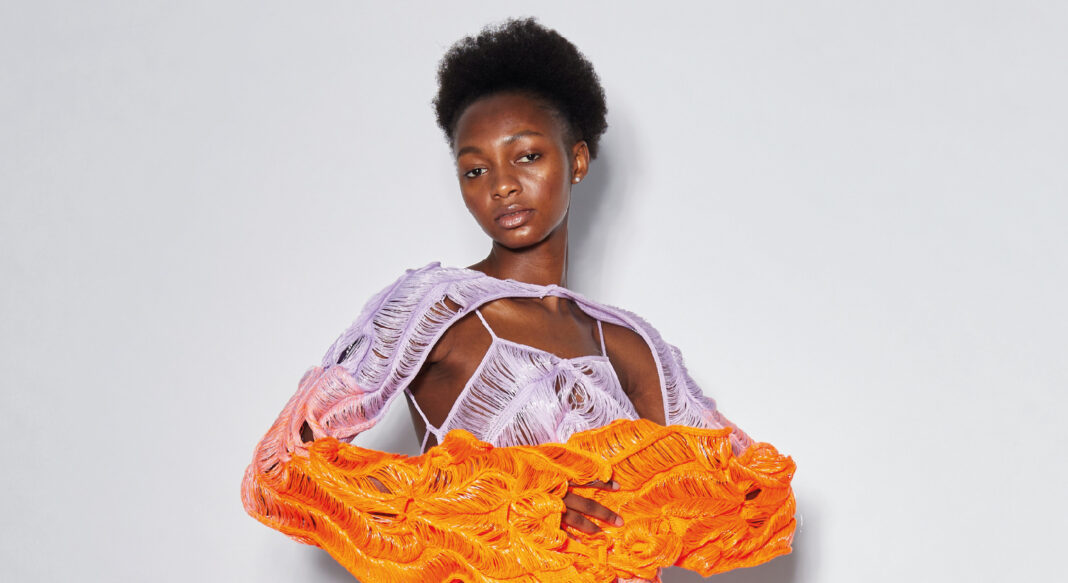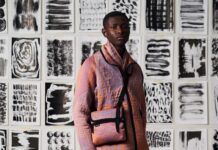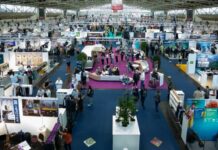
Graduating from The Swedish School of Textiles in June 2020, Emma Gudmundson presents her collection of knitted garments, ‘Floats’. Exploring the often-overlooked technique of float creation, Emma’s garments were knitted from her lounge during lockdown, proving her to be as proactive as she is adaptive in her determination to push her creativity. It was Emma’s intention to celebrate through her garment outcomes the domestic knitting machine as a catalyst for the entire design process, not “just a tool”.
Based in Boras, Sweden, Emma’s interest in knitting stemmed from the experimental parts of a course she took in the first year of her Fashion Design degree. Here, she first tried out combinations of knitting with selected needles and hooking up stitches, which has now become her distinctive ‘designer hand writing’.

“Zero-waste couture with a fun and colourful twist” is Emma’s summary for her collection. Fascinated by underwater creatures such as Mandarin Fish and Flower hat Jellyfish, her vibrant inspiration translates to her ombre textiles, which combined with floating techniques blends transitions from one hue to the next.
Detailing her initial inspiration, Emma shared, “I wanted to create something that read as organic yet futuristic at the same time. I was inspired by Iris Van Herpen´s SS17 collection where she worked with lines that met in different directions and created patterns and shapes on the body. Cecile Feilchenfeldt has also been an influence with her fantastic experimental knitting and material explorations.”
Zero-waste production was important to Emma too, “For me it is a given that when you knit you do it zero-waste. Since the fabric creation can occur at the same time as the pattern piece development there is no reason to do it in any other way. This collection only consists of “squares” that are sewn together. My unique stitch combinations are what shape these squares into pattern pieces and ultimately shape the entire garment. By working in this way, an alternative and more experimental method of zero-waste knit was explored.”

Focussing on refining her “flotation and hook-up stitch” method of fabric creation, Emma mastered the technique and explored the breadth of its potential. Sampling experimentally, she began documenting her learning process by building a sample library. Beginning with small knitted pieces, she tested colour combinations, yarn possibilities and the scale and placements of stitches on a Silver Reed SK-840 machine. Research completed, Emma then evaluated each fabric based on what properties she deemed important within her final collection. Sturdiness of drape and pattern visualisation were essential.
Informed by her rigorous sampling and material tests, Emma’s primary fibre choice was cotton, with fine polyesters achieving the colourful gradient sections. Monofilament was introduced to the material palette for aesthetic reasons, as well as structural. Through adding sheen it highlighted the 3D forms created by the floats, whilst also strengthening and reinforcing the garment structure. The yarn lab at school was inaccessible during lockdown which left little chance for further material experimentation, meaning Emma’s material and colour choices were made sooner than she would have liked, but she made her ideas work with what she had.
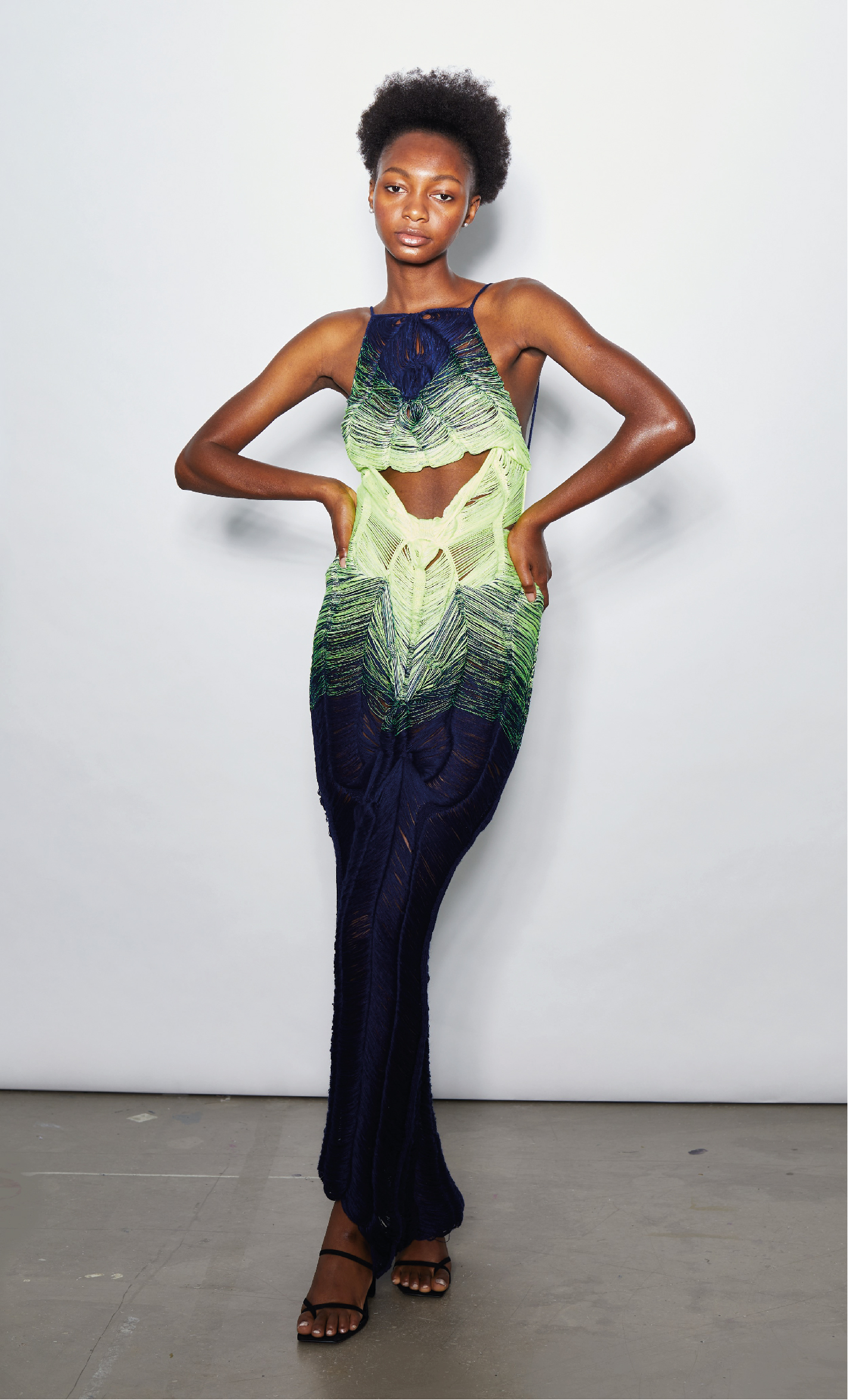
Photo Credit: Photographer: Daniela Ferro. MUA and hair: Johanna Persson. Model: Jalima Barrow.
“The hook-up stitches made the knit wobbly and it almost had a life of its own, so I felt it was important to not force or overdo the silhouettes but let the fabric lead the way and take centre stage.”
Focussing on her intention to celebrate the potential of the domestic knitting machine, Emma’s framework for the garment design process was machine and textile led. Sketching and experimenting with the machine in a variety of scales without planning any final outcomes beforehand facilitated a truly open minded, adaptive process.
With the textile elements resolved, it was time to apply her fabrics to the human form, observing the natural inclinations of her fabrics to inform garment silhouettes. Describing the process as “a time consuming yet essential one of trial-and-error”, the discoveries she made about the potential of her fabrics were invaluable as she gained an understanding of the fabric behaviour- most crucially- the impact of gravity!
Culminating in a collection of couture dresses, each of Emma’s garments immediately draws attention through their compatibility with the human form. Engineered garment details such as key-holes revealing skin, straps and necklines are finished immaculately, hugging figures whilst allowing fabrics to flatteringly skim over curves. Emma’s garments embody her intuitive attention to detail in observing what her textiles ‘wanted to do’ when draped. In this way, she achieved her goal.
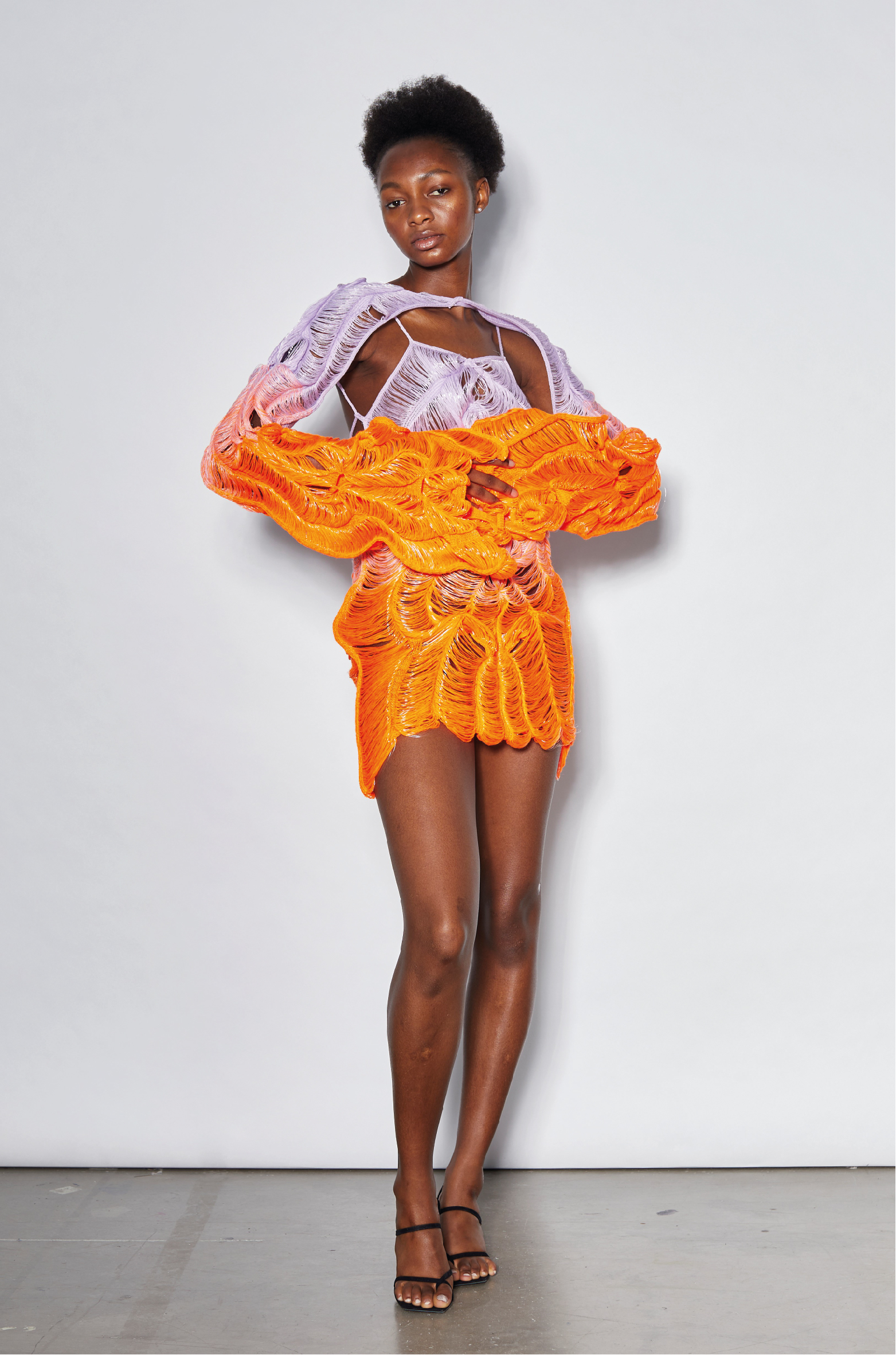
Photo Credit: Photographer: Daniela Ferro. MUA and hair: Johanna Persson. Model: Jalima Barrow.
During the pandemic, Emma was grateful to have borrowed a knitting machine from her school, which facilitated her working from home. Producing the entire collection from her living room, Emma found the flexibility in her working hours helped her creativity flourish. Missing the feedback of her course mates and tutors, she described the process as lonely at times, without the opportunity for feedback from her peers. But, this secluded design process helped Emma to trust her gut and built confidence in her own instincts and thoughts, which was a positive outcome from this challenging situation.
The fit and drape of Emma’s garments have real impact, eye catching and instantly inspiring questions of how they could possibly have been created on a domestic knitting machine alone. To create such impact with the use of only one technique, within a collection of such varied silhouettes is a real achievement. Refining her unique approach to knitting whilst showcasing what can be achieved when yarn, colour, technique and creativity come together perfectly is truly inspiring.
It is hard to believe that Emma’s collection was made from home, without access to the specialist workshops she was used to working within. This is a testament to her ability to work proactively, adapting to her environment and producing work that shows no signs of compromise. Working for a company that sews facemasks for health care, Emma is currently dedicating her time to this cause. She plans to start her own company selling her designs in the near future, having received so much positive consumer interest in her collection- an exciting prospect!
You can view Emma’s portfolio here.
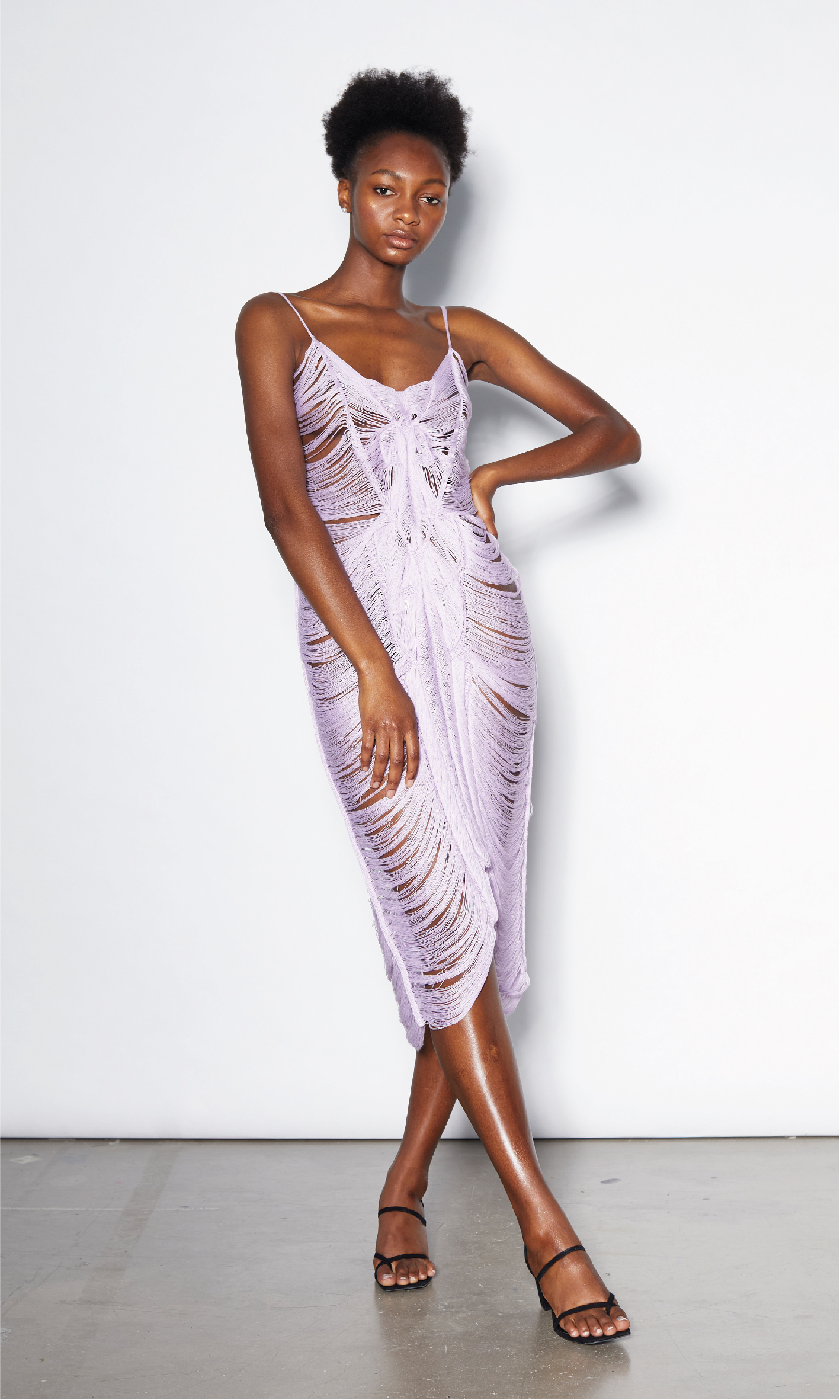

Subscribe To Our Newsletter
Join our mailing list to receive the latest news and updates from our team.


